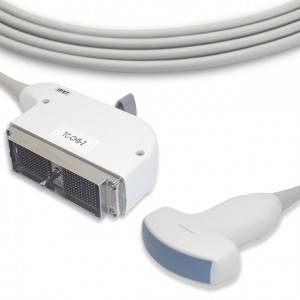1. Straight probe: single crystal longitudinal wave straight probe double crystal longitudinal wave straight probe
2. Oblique probe: Single crystal shear wave oblique probe a1<aL<aⅡ, double crystal shear wave oblique probe, single crystal longitudinal wave oblique probe aL<a1 for small angle longitudinal wave oblique probe
aL is a creeping wave probe near a1; the longitudinal wave transmitted along the surface of the workpiece has fast speed, large energy, long wavelength, and the detection depth is deeper than the surface wave, and the surface finish of the workpiece is looser than the surface wave.

3. Probe with curvature: circumferential curvature and radial curvature.
The circumferential curvature probe is suitable for the detection of axial defects such as seamless steel pipes, longitudinally welded pipes, cylindrical forgings, and shaft workpieces. When the diameter of the workpiece is less than 2000mm, the axial curvature of the probe must be ground to ensure a good coupling.
The radial curvature probe is suitable for the detection of radial defects such as seamless steel pipes, steel pipe butt welds, cylindrical forgings, and shaft workpieces. When the diameter of the workpiece is less than 600mm, the radial curvature of the probe needs to be ground to ensure a good coupling.
4. Focus probe: point focus line focus.
5.Surface wave probe: (when the longitudinal wave incident angle is greater than or equal to the second impending angle, the shear wave refraction angle is equal to 90 to form a surface wave).
The transverse wave transmitted along the surface of the workpiece has a slower speed, low energy, and short wavelength. The detection depth is shallower than the creeping wave, and the surface finish of the workpiece is more stringent than the creeping wave.
Post time: Jun-02-2021

